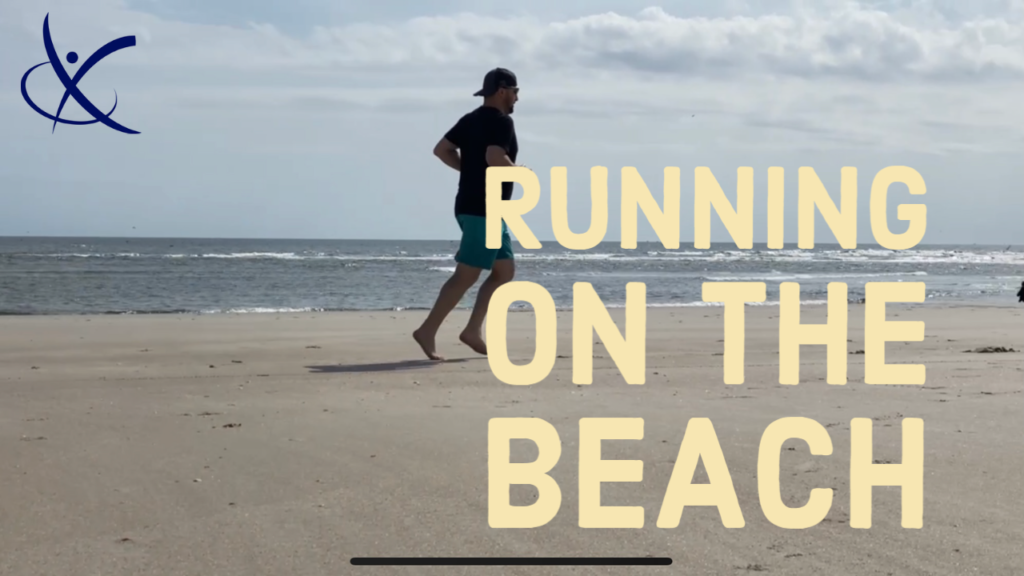Running on the Sand is a Beach!
When was the last time you went running at the beach? Damn, what a workout. My feet and calves work overtime just walking on the sand. There’s a good reason for that. So it’s important you continue reading if you plan on logging some sandy miles between piña coladas any time in the future.
Running is a game of economy. We cannot repeat that enough. Make your body work as little as possible with each mile. Efficiency is the name of the game with every runner in our clinic. When we talk about training variables, intensity is the LAST one we introduce into training. That means speed, hills, varying terrain, etc are all a privilege and must be earned. The body, specifically the tendons of the lower body, must be ready to handle those tasks without breaking down.
When it comes to running, we need to treat the beach like any other intensity variable:
Speed
Hills
Trails
Terrain
Etc.
Each requires a baseline amount of capacity to execute without increasing your risk of injury. Then they need to be gradually built into your programming. Lastly, they need to be consistently practiced in order to maintain tissue capacity for that activity. What that means is you can’t just do them “once in a while” and expect to have a low risk of injury from that variable.
We always recommend preparing your body for the workout. We don’t recommend using the workout to prepare your body. If you don’t have the capacity or resilience for a specific workout, you are going to increase your risk of a running-related injury. The sand is no exception, regardless of the soothing sounds of the sea.
Sand Requires 60% More Effort
The research is conclusive on this topic. It requires 1.6x the amount of energy to run on sand compared to running on a firmer surface. This is the opposite of making the body work as little as possible.
- Running on the sand is not smart. Here’s the skinny on why:
- Sand absorbs (steals) force
- Your body needs rigidity for running
- Your achilles tendon is at greater risk of injury
- Even packed down sand can be an issue
Have you ever tried to get up onto a pool float in the water or walking in a bouncy castle? It’s a lot harder than climbing up the pool ladder or walking on the pavement. That increased effort mirrors what happens when running on the sand. The soft surface absorbs energy which means more force has to be generated to achieve the same propulsion.
Efficient running requires a certain amount of stiffness and rigidity in tendons. This helps exert force into the ground for propulsion and reduces overall work. The sand, however, is a soft surface. A soft supple surface absorbs (seals) the force and the runner must adopt a stiffer running style to produce sufficient force. This is to compensate for the loss of efficiency on the softer surface. More force never ends up favoring the tendons. Additional studies show a decreased risk of injury to the Achilles tendon when running on stiffer surfaces.
It’s no mystery why people say “running on the beach is a great workout.” The problem is that it is often “too much” of a workout and will stress the Achilles tendon and foot structures. Remember how tough it is just walking on the sand? That excessive energy expenditure is directly related to increasing stress on structures below the knee.
Even choosing the sand closest to the water can be problematic. While the sand is packed down, it is also usually pitched to the water. We don’t recommend running on a cambered surface and the packed down sand presents the same risks as the curved shoulder of the road. There just aren’t many ways to frame beach running that benefits the runner.
The bottom line? When it comes to the beach, we don’t recommend it for running. There’s simply no way to spin it where the risk is worth the reward.
The juice ain’t worth the squeeze.
If you want to combine the soothing sounds and views of crashing waves with our love of running, then find a road parallel to the beach. A boardwalk will suffice as well. Some beaches even have paved paths that wind along the sand. Each of these options is a solid choice over the sand. We know this is a bit of a buzzkill, but we have an obligation to present the information accurately. We don’t do you runners any favors by cherry-picking the data.
As one of our friends and clients recently put it…”leave the beach stuff for the beach.”
